Client:

My Role:
Project Manager, User Researcher, Interaction Designer, Animator
Team:
Team: Maj Eržen Ambrož, Faezeh Ensafi, Yasheng Zhang, Karina Shantilal

Project Manager, User Researcher, Interaction Designer, Animator
Team: Maj Eržen Ambrož, Faezeh Ensafi, Yasheng Zhang, Karina Shantilal
The NEMO Science Museum in Amsterdam, commissioned my team and me to design an exhibit for their upcoming renovation. With 'Re-build', we're teaching the flow of a circular economy, focusing on construction materials as a product. By placing visitors in the role of a farmer, manufacturer, and a builder, we address and educate the importance of sustainability in construction.
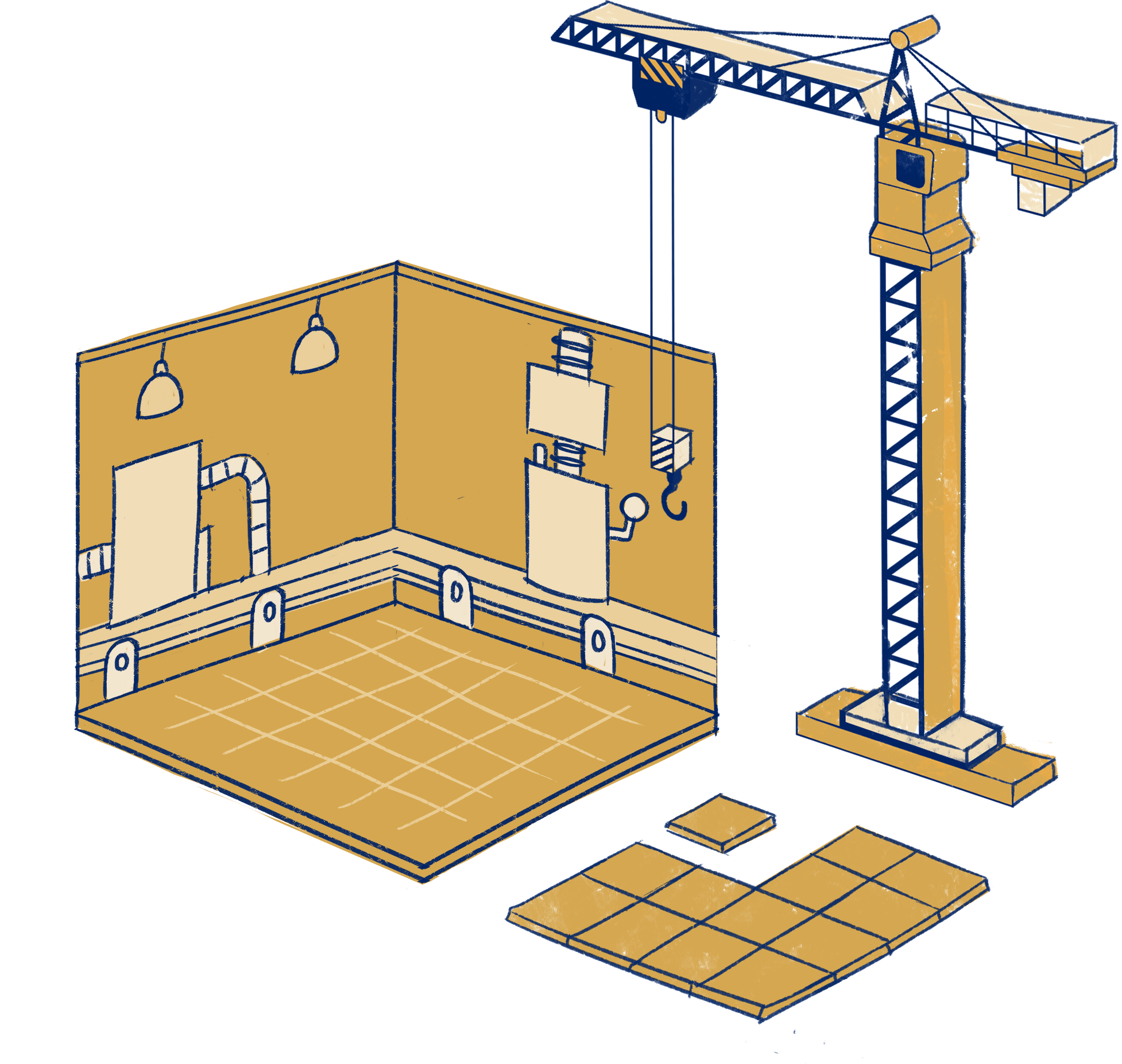
A video of the game's narrative, designed to be projected onto the walls of the exhibit.
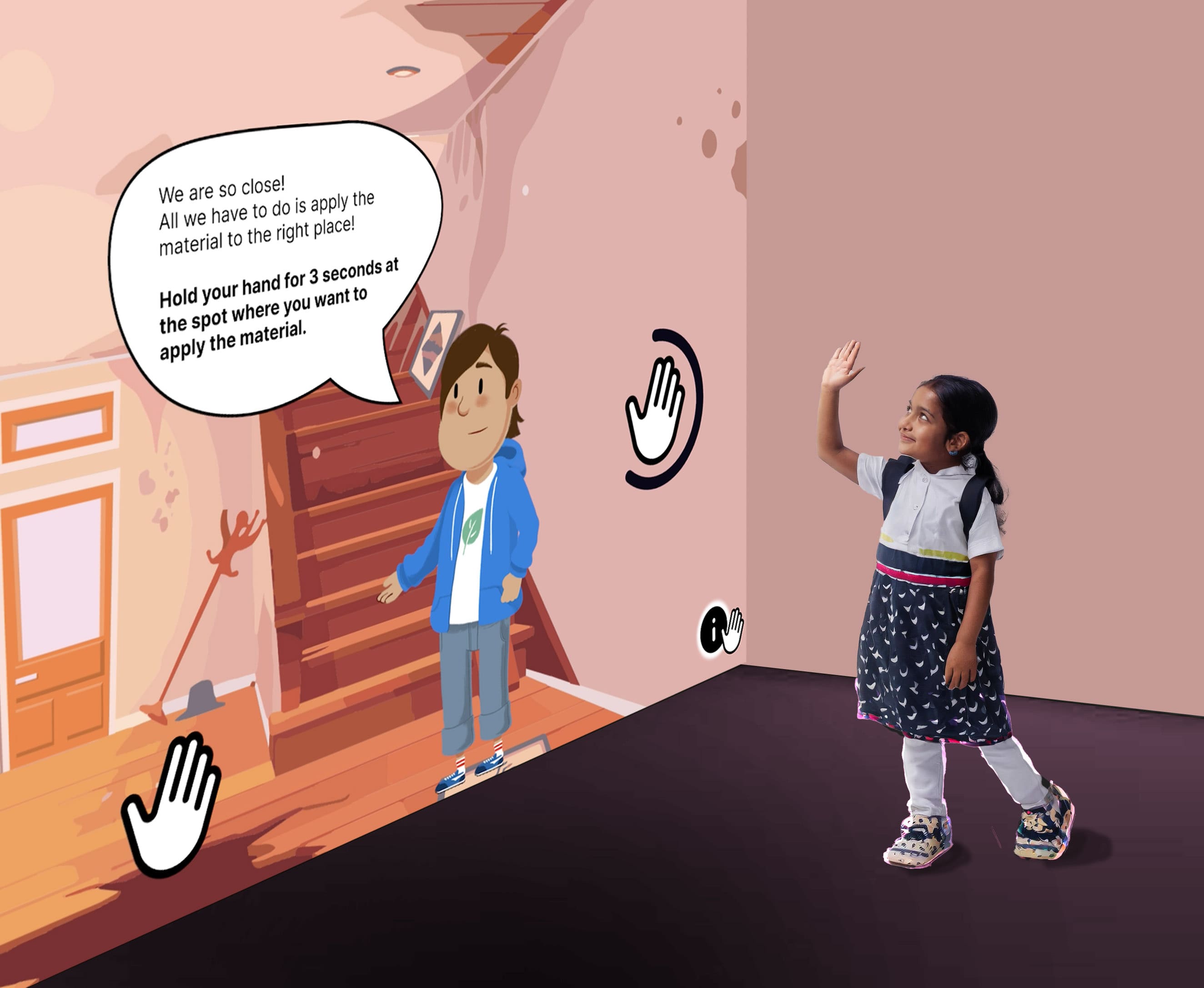
Visualisation of a child interacting with the 'Re-build' exhibit.
To educate visitors about the interests of the stakeholders, and the importance of their collaboration in the production of sustainable materials in construction.
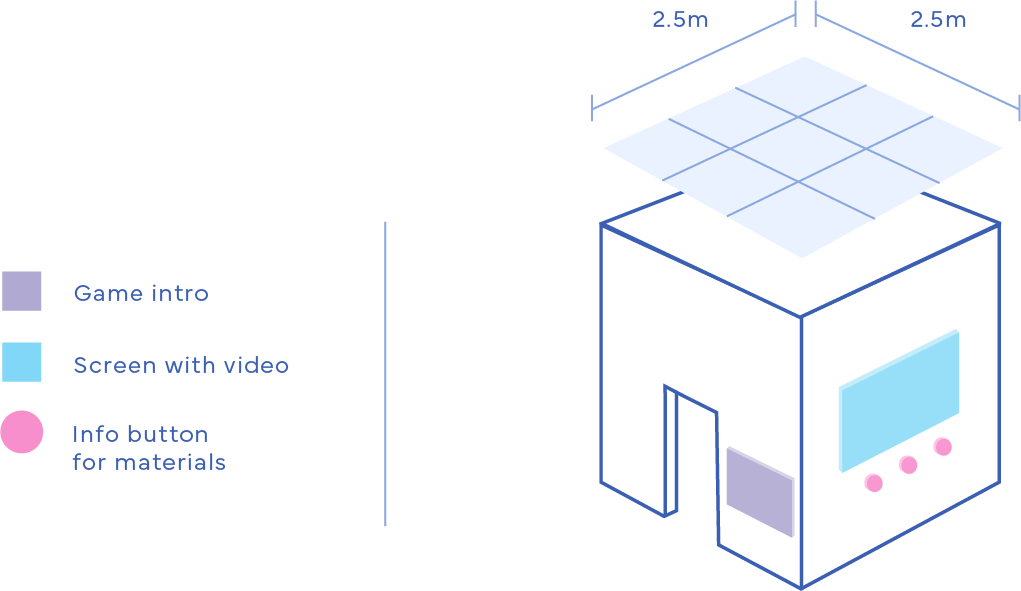
NEMO Science Museum is developing four new exhibitions for its second floor, Technium, concerning Machines, Energy, Constructions, Design & Creating. Our design will be a part of the Constructions section. The exhibit will take place in a 2.5m2 area.
Children aged 8+ years, accompanied by an adult.
Our preliminary research consisted of exploring the various construction materials sustainable in the Dutch context. This meant taking in account the environmental cost in terms of transport, production, and recycling. Using the dot voting method, we ended up shortlisting 3 materials which are different enough from each other to be able to include a variety of raw materials, production methods, and application.
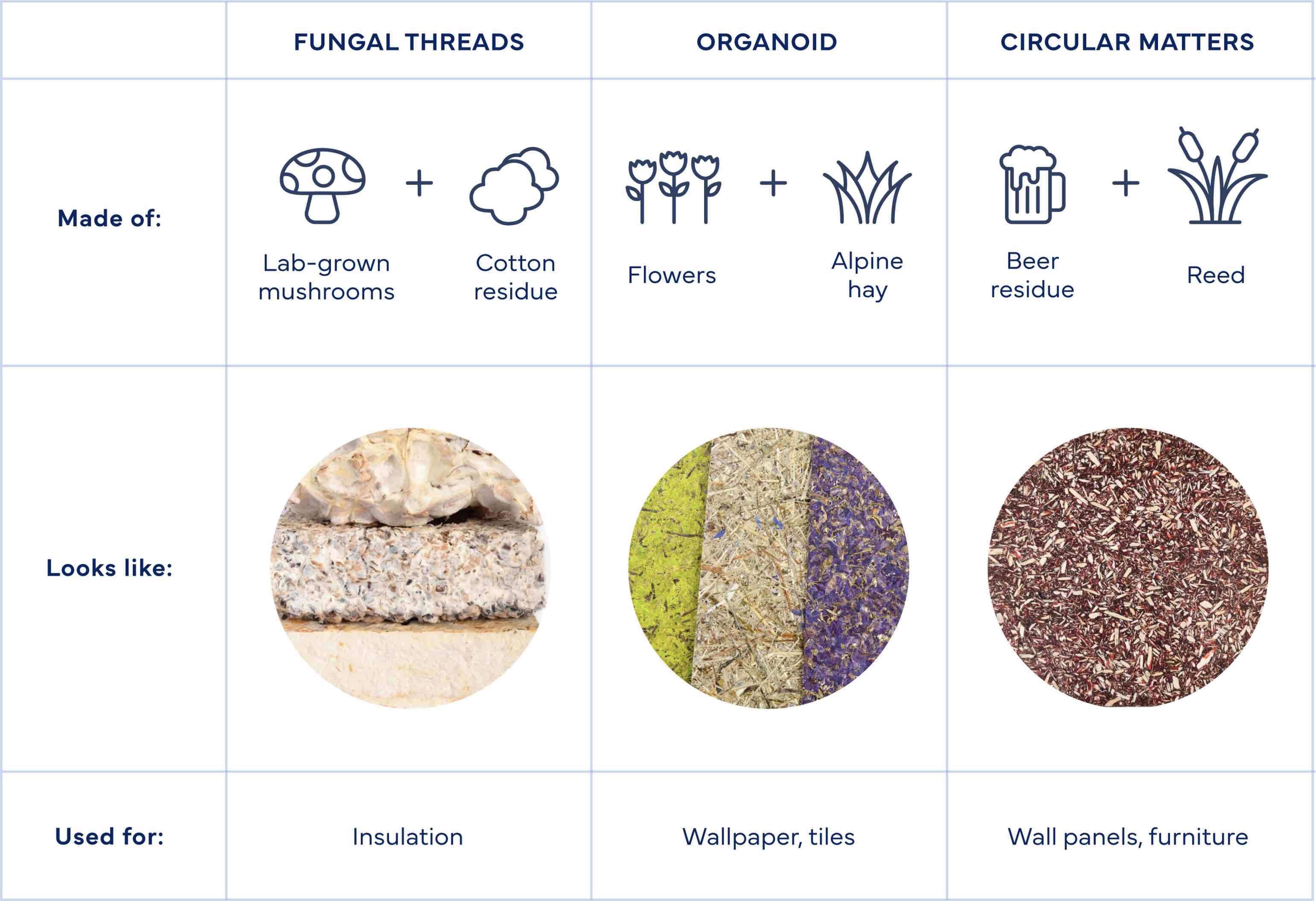
With 'Re-build', we're teaching the flow of a circular economy, focusing on construction materials as a product. By placing visitors in the role of a farmer, manufacturer, and a builder, we address and educate about the stages highlighted in this chart.
Learning about the concept of a circular economy in terms of construction is important for children, in order to foster environmental awareness and responsibility from a young age. Additionally, it empowers children to become advocates for environmentally conscious practices, such as repairing instead of replacing, and encourages innovative thinking and problem-solving skills.

Storytelling is effective for teaching complex topics because it engages learners emotionally, making abstract concepts more relatable and memorable, and it allows for the contextualization of information within narrative frameworks, facilitating comprehension and retention through vivid imagery and narrative structure.

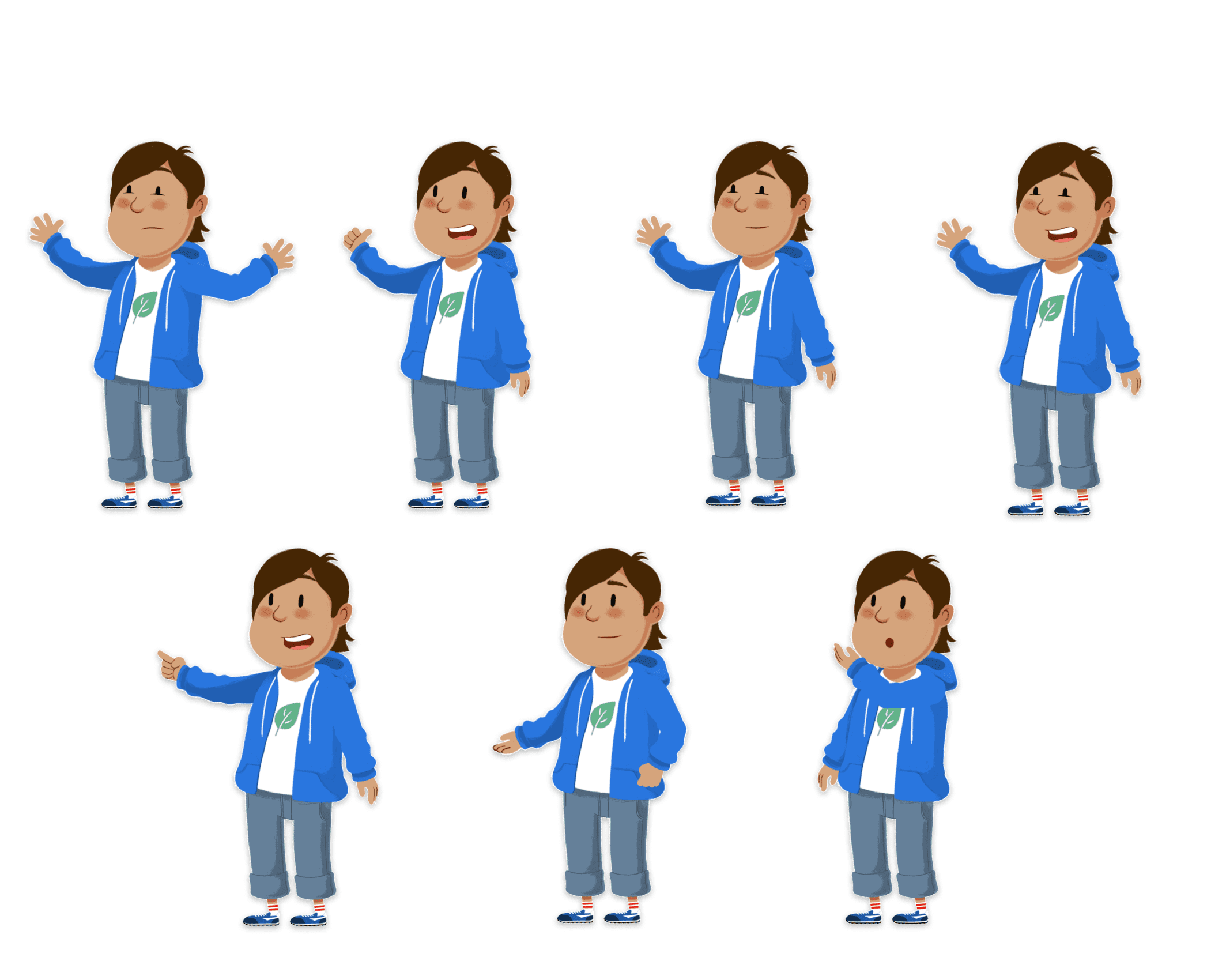
I devised a narrative that seamlessly integrates the educational content we aim to convey through our game, centering around Robin, an androgynous youth whose appearance appeals to a diverse audience. Participants are tasked with helping Robin in repairing their house, allowing them to select an area of the house for restoration and then guiding them through the phases of the corresponding construction material's life cycle.
NEMO Science Museum believes in a 'free-choice' learning experience, making it important for us to follow certain guidelines while designing this exhibit:
Visitors can view information about 'Rebuild' by the exhibit's entrance. There are 3 buttons situated under a screen on an exterior wall, with which visitors can learn about the materials introduced in the game.

In order to validate our concept, we created a rapid prototype with which we performed our first test at the science museum. We laid out a map on a table and asked visitors to follow simple instructions, such as moving a toy car from A to B, with a narrative attached. The visitors were asked open-ended questions about their interaction, from which we gathered feedback for improvement. We further developed our idea and tested once more at a later stage.
Feedback: There is a disconnect between the map and the instructions. It is not clear where to look.
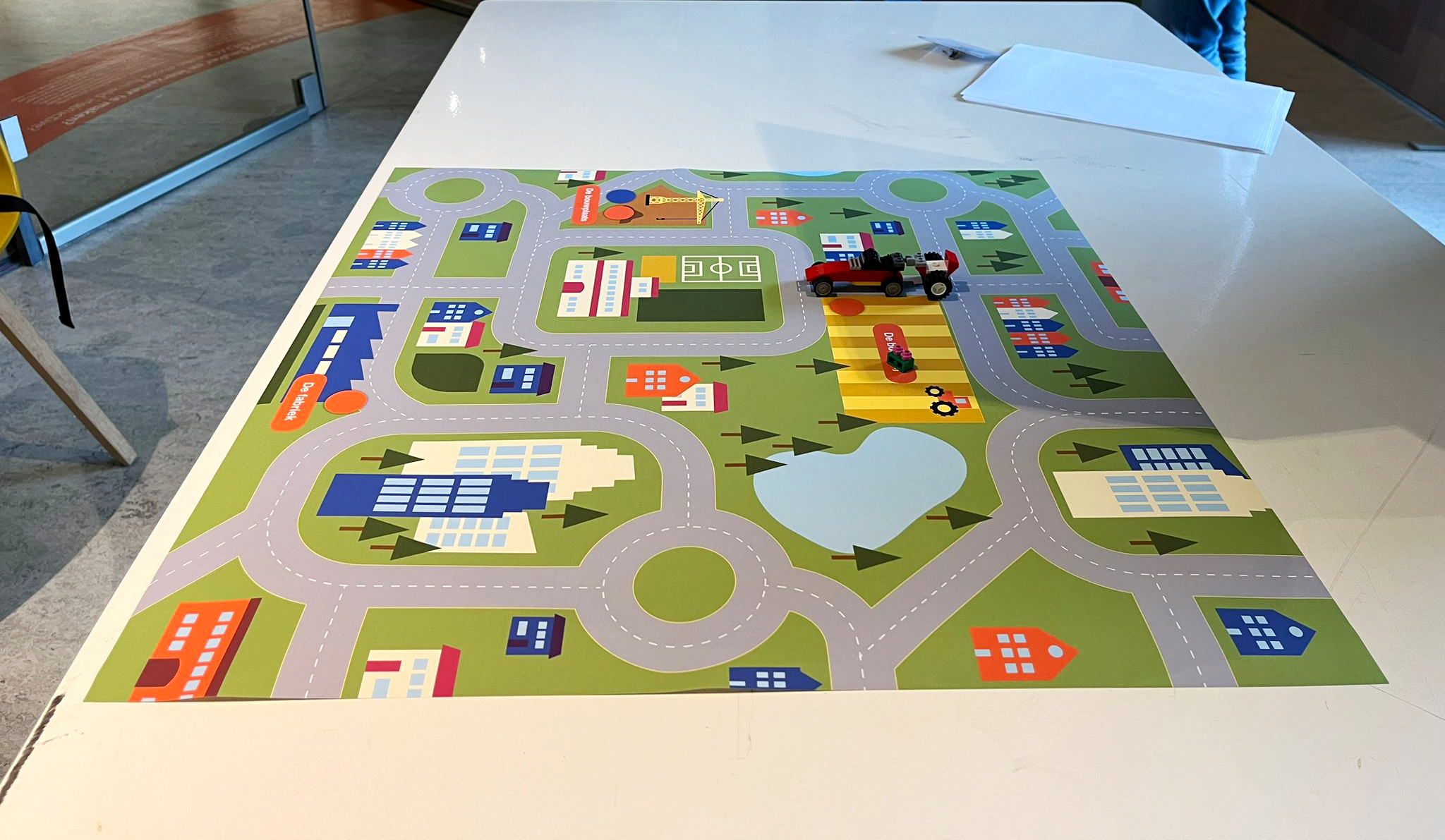
Team member Maj setting up the map (illustrated by me) and the presentation used to display instructions
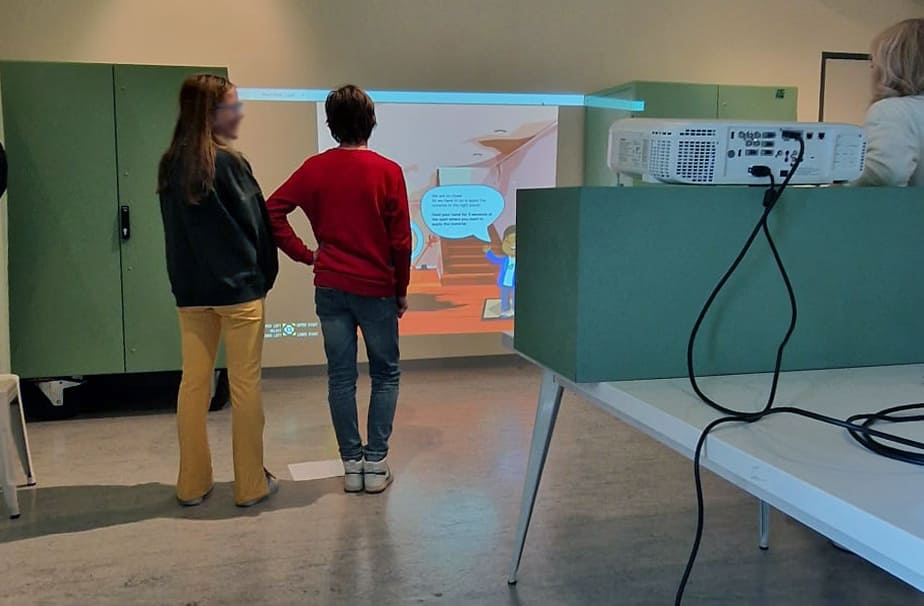
Children interacting with the 'Wizard of Oz' prototype.
Our second test at the NEMO Research & Development Lab was conducted using the 'Wizard of Oz' method of prototyping. To simulate an AR game, we compiled the 'Re-build' narrative in a PDF format and projected it onto a blank wall using a short throw projector. The image and instructions projected were clear to read, despite the ambient light. When 'Robin' appeared on screen and instructed the children to perform gestures, they followed promptly. After its conclusion, we conducted an in-depth interview about their experience with the game.
Observations: All visitors were able to recount the information in the game correctly, and found it to be interesting. Due to the amount of information relayed using text, it is important to offer many language options.
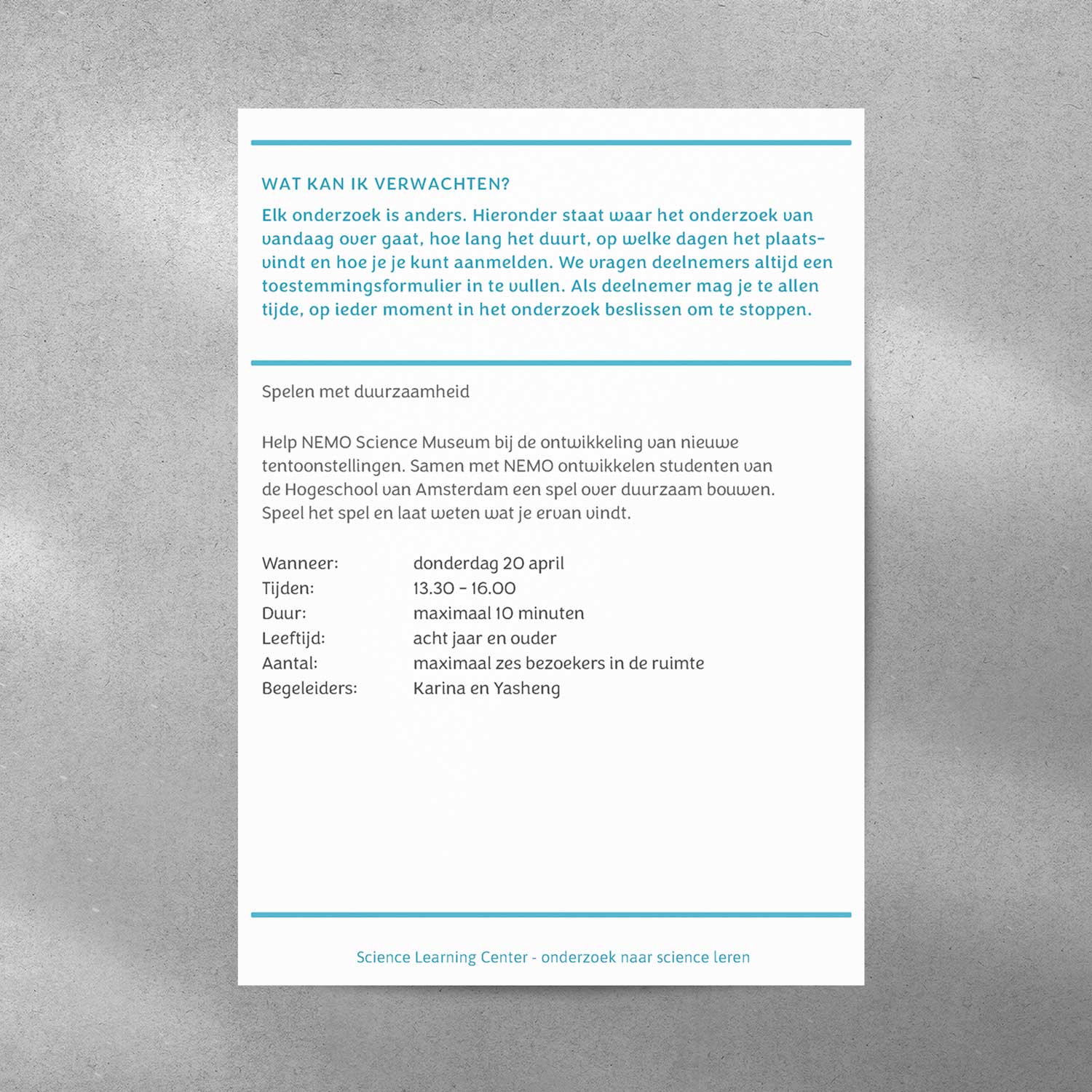
The flyer distributed to visitors at NEMO Science Museum in anticipation of our test
Being able to test our exhibit with the visitors was of intrinsic value to the development of the concept and its validation. Not only did we gain vital input from our target audience, we were able to gather insights from unpredictable problems we encountered, such as the language issue.
© Karina Shantilal 2024